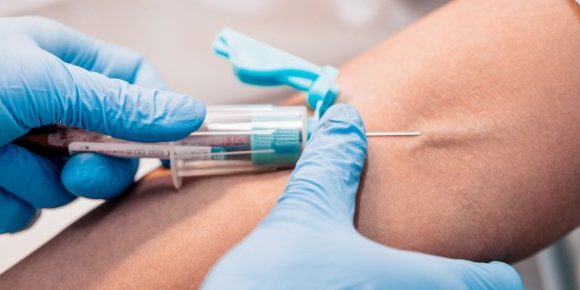TABLE OF CONTENTS
INTRODUCTION TO PHLEBOTOMY 1
- History of Phlebotomy
- Phlebotomy’s Role in Health Care
- Laboratories in the Twenty-First Century
- Laboratory Staff
- Ethical Considerations
- Standards Used in the Laboratory
- Quality Assurance in Phlebotomy
- Body Systems
• Anatomy and Physiology of the Circulatory System
CHAPTER 2 SAFETY IN PHLEBOTOMY 55
• Infection Control and Isolation Techniques
• Procedure 2.1 Medical Asepsis Handwashing
- Procedure 2.2 Removing Contaminated Gloves
- Procedure 2.3 Blood Collection in an Isolation Room
- Occupational Safety and Health Administration
Standards
-
- Disposal of Used Materials
- Importance of Following Safety Guidelines
- Procedure 2.4 Response to Accidental Biohazard Exposure
CHAPTER 3 PHLEBOTOMY EQUIPMENT 91
-
- The Metric System
- Syringes and Needles
- Evacuated System
- Butterfly Collection System
- Coagulation
- Anticoagulants
- Tourniquets
- Micro-collection Equipment
- Procedure 3.1 Collecting a Unopette Blood Sample /
- Specimen Collection Trays
- PHLEBOTOMY TECHNIQUE
- Procedure 5.1 Fingerstick Skin Puncture
Obtaining a Blood Sample on Babies
-
- Procedure 5.2 Heelstick Skin Puncture
- The Anticoagulated Patient
- The Resistant Patient
- The Psychiatric Patient
- The Obese Patient
- The Patient in Isolation
- The Patient with Damaged or Collapsing Veins
SPECIMEN CONSIDERATIONS AND
SPECIAL PROCEDURES
-
- Fas ing Specimens
- Timed Specimens
- Stat Specimens
- Special Collection Techniques.
- Making a Blood Smear
- Procedure 6.1 Making a lood Smear
- Glucose Testing
- Bleeding Times
- Procedure 6.2 Surgicutt Bleeding Time Method
- The Blood Culture
- Factors Affecting Laboratory Values
- Urine, Semen, and Culture Collection
- Procedure 6.3 Collecting a Cleancatch Midstream Urine Specimen: Male
- Procedure 6.4 Collecting a Cleancatch Midstream Urine Specimen: Female
- Procedure 65Collecting a Bagged Urine Specimen from Children
- Procedure 6.6 Collecting a 24-Hour Urine Specimen
- Procedure 6.7 Collecting a Specimen for Semen Analysis
- Procedure 6.8 Collecting a Throat Culture Specimen
- Specimen Preservation and Transport
- Steps in the Blood Collection Technique
- Approaching the Patient
- Patient Identification
- Procedure 4.1 Patient Identification
- Accession Number and Specimen Identification
- Positioning the Patient
- Selecting the Appropriate Venipuncture Site
- Performing a Safe Venipuncture
- Syringe Versus Evacuated Tube Specimen Collection
- Procedure 4.2 Venipuncture by Syringe
- Procedure 4.3 Venipuncture by Evacuated Tube Method
- Patient Reactions
- The Failed Venipuncture
- Intravenous and Indwelling Lines
- Identification of the Specimen
- Criteria for Recollection or Rejection of a Specimen
- Prioritizing Specimen Collection
- Arterial Punctures

